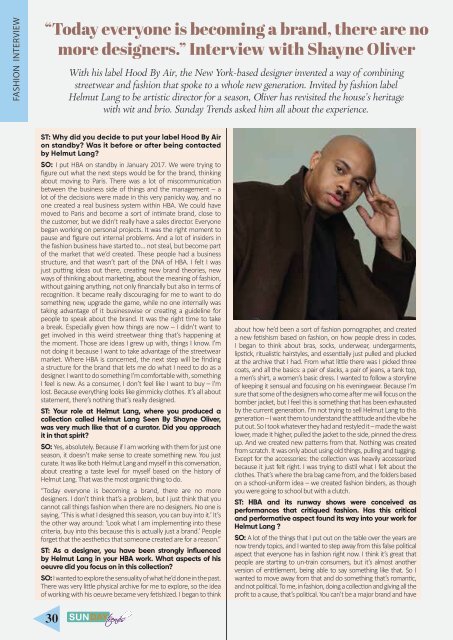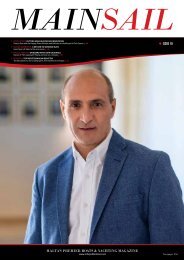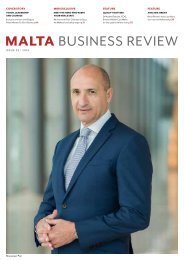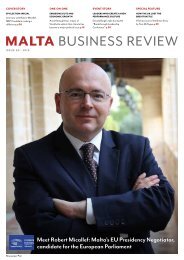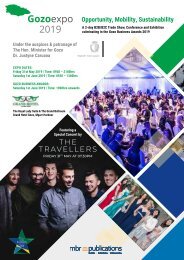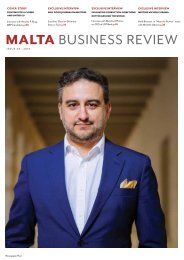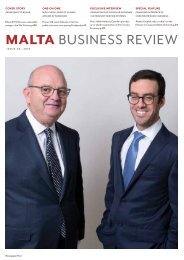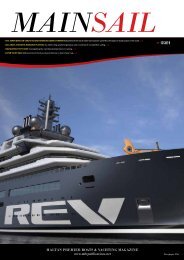You also want an ePaper? Increase the reach of your titles
YUMPU automatically turns print PDFs into web optimized ePapers that Google loves.
FASHION INTERVIEW<br />
“Today everyone is becoming a brand, there are no<br />
more designers.” Interview with Shayne Oliver<br />
With his label Hood By Air, the New York-based designer invented a way of combining<br />
streetwear and fashion that spoke to a whole new generation. Invited by fashion label<br />
Helmut Lang to be artistic director for a season, Oliver has revisited the house’s heritage<br />
with wit and brio. Sunday Trends asked him all about the experience.<br />
<strong>ST</strong>: Why did you decide to put your label Hood By Air<br />
on standby? Was it before or after being contacted<br />
by Helmut Lang?<br />
SO: I put HBA on standby in January 2017. We were trying to<br />
figure out what the next steps would be for the brand, thinking<br />
about moving to Paris. There was a lot of miscommunication<br />
between the business side of things and the management – a<br />
lot of the decisions were made in this very panicky way, and no<br />
one created a real business system within HBA. We could have<br />
moved to Paris and become a sort of intimate brand, close to<br />
the customer, but we didn’t really have a sales director. Everyone<br />
began working on personal projects. It was the right moment to<br />
pause and figure out internal problems. And a lot of insiders in<br />
the fashion business have started to… not steal, but become part<br />
of the market that we’d created. These people had a business<br />
structure, and that wasn’t part of the DNA of HBA. I felt I was<br />
just putting ideas out there, creating new brand theories, new<br />
ways of thinking about marketing, about the meaning of fashion,<br />
without gaining anything, not only financially but also in terms of<br />
recognition. It became really discouraging for me to want to do<br />
something new, upgrade the game, while no one internally was<br />
taking advantage of it businesswise or creating a guideline for<br />
people to speak about the brand. It was the right time to take<br />
a break. Especially given how things are now – I didn’t want to<br />
get involved in this weird streetwear thing that’s happening at<br />
the moment. Those are ideas I grew up with, things I know. I’m<br />
not doing it because I want to take advantage of the streetwear<br />
market. Where HBA is concerned, the next step will be finding<br />
a structure for the brand that lets me do what I need to do as a<br />
designer. I want to do something I’m comfortable with, something<br />
I feel is new. As a consumer, I don’t feel like I want to buy – I’m<br />
lost. Because everything looks like gimmicky clothes. It’s all about<br />
statement, there’s nothing that’s really designed.<br />
<strong>ST</strong>: Your role at Helmut Lang, where you produced a<br />
collection called Helmut Lang Seen By Shayne Oliver,<br />
was very much like that of a curator. Did you approach<br />
it in that spirit?<br />
SO: Yes, absolutely. Because if I am working with them for just one<br />
season, it doesn’t make sense to create something new. You just<br />
curate. It was like both Helmut Lang and myself in this conversation,<br />
about creating a taste level for myself based on the history of<br />
Helmut Lang. That was the most organic thing to do.<br />
“Today everyone is becoming a brand, there are no more<br />
designers. I don’t think that’s a problem, but I just think that you<br />
cannot call things fashion when there are no designers. No one is<br />
saying, ‘This is what I designed this season, you can buy into it.’ It’s<br />
the other way around: ‘Look what I am implementing into these<br />
criteria, buy into this because this is actually just a brand.’ People<br />
forget that the aesthetics that someone created are for a reason.”<br />
<strong>ST</strong>: As a designer, you have been strongly influenced<br />
by Helmut Lang in your HBA work. What aspects of his<br />
oeuvre did you focus on in this collection?<br />
SO: I wanted to explore the sensuality of what he’d done in the past.<br />
There was very little physical archive for me to explore, so the idea<br />
of working with his oeuvre became very fetishized. I began to think<br />
about how he’d been a sort of fashion pornographer, and created<br />
a new fetishism based on fashion, on how people dress in codes.<br />
I began to think about bras, socks, underwear, undergarments,<br />
lipstick, ritualistic hairstyles, and essentially just pulled and plucked<br />
at the archive that I had. From what little there was I picked three<br />
coats, and all the basics: a pair of slacks, a pair of jeans, a tank top,<br />
a men’s shirt, a women’s basic dress. I wanted to follow a storyline<br />
of keeping it sensual and focusing on his eveningwear. Because I’m<br />
sure that some of the designers who come after me will focus on the<br />
bomber jacket, but I feel this is something that has been exhausted<br />
by the current generation. I’m not trying to sell Helmut Lang to this<br />
generation – I want them to understand the attitude and the vibe he<br />
put out. So I took whatever they had and restyled it – made the waist<br />
lower, made it higher, pulled the jacket to the side, pinned the dress<br />
up. And we created new patterns from that. Nothing was created<br />
from scratch. It was only about using old things, pulling and tugging.<br />
Except for the accessories: the collection was heavily accessorized<br />
because it just felt right. I was trying to distil what I felt about the<br />
clothes. That’s where the bra bag came from, and the folders based<br />
on a school-uniform idea – we created fashion binders, as though<br />
you were going to school but with a clutch.<br />
<strong>ST</strong>: HBA and its runway shows were conceived as<br />
performances that critiqued fashion. Has this critical<br />
and performative aspect found its way into your work for<br />
Helmut Lang ?<br />
SO: A lot of the things that I put out on the table over the years are<br />
now trendy topics, and I wanted to step away from this false political<br />
aspect that everyone has in fashion right now. I think it’s great that<br />
people are starting to un-train consumers, but it’s almost another<br />
version of entitlement, being able to say something like that. So I<br />
wanted to move away from that and do something that’s romantic,<br />
and not political. To me, in fashion, doing a collection and giving all the<br />
profit to a cause, that’s political. You can’t be a major brand and have<br />
30


